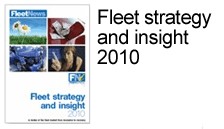Three-quarters of small fleets (companies with between one and 50 cars) have slashed their spending and two-thirds intend to, according to Fleet News research.
Choosing vehicles with lower CO2 and high mpg, along with reducing fuel costs, have been the favoured methods to cut costs by around half (48%) of small fleet operators.
They also felt that choosing lower emitting vehicles would bring them their greatest saving.
The third most popular cost-cutting method was extending replacement cycles (38% had kept their vehicles longer and 32% intend to).
Reducing the fleet size has also been high on the list with 30% shrinking their car fleet.
Small fleet operators have been looking at accident costs too and driver training is the area they are most likely to spend more this financial year.
Just under half (45%) said they would invest in driver training and around a quarter (23%) would spend on risk management.
Maintenance is also a key spending area with 23% of fleet operators planning to spend more on it – a reflection of the fact they are keeping vehicles on the road longer.
There were few concerns that their actions were a ‘false economy’ with 92% confident that their actions were wise.
However, more than half of the small fleet survey respondents expect their costs to rise this financial year.
This is linked to the fact that many said manufacturers and suppliers would increase prices.
For instance, 70% were expecting insurance hikes, 60% were expecting leasing price rises, 48% expected rental rises and 47% expected manufacturers to raise prices.
The Fleet Strategy and Insight Report 2010, which contains the survey findings, is available now at a special pre-order price of £750 – a saving of £245. Contact Vicky Meadows on 01733 468 319 or email vicky.meadows@bauermedia.co.uk.
See the Hannaford case study on the next page.
Case Study - Hannaford
Leigh Stiff, fleet manager at Hannaford, has set himself the ambitious task of saving his company £60,000 this year.
Stiff operates 29 vehicles (almost evenly split between cars and vans) and has been in charge of the fleet since November last year.
Stiff’s key cost-cutting measure is reducing the number of suppliers Hannaford uses.
He has identified that there are considerable savings to be made by de-bundling agreements. For instance, he has halved the cost of licence checking by going direct to the DVLA rather than using his leasing provider.
Driver training costs have also been halved by going to the provider directly.
Stiff also brought accident management in-house and set up his own accounts with Kwik-Fit and the AA.
Dealing directly with Citroën for the supply of vehicles has delivered additional savings.













Login to comment
Comments
No comments have been made yet.